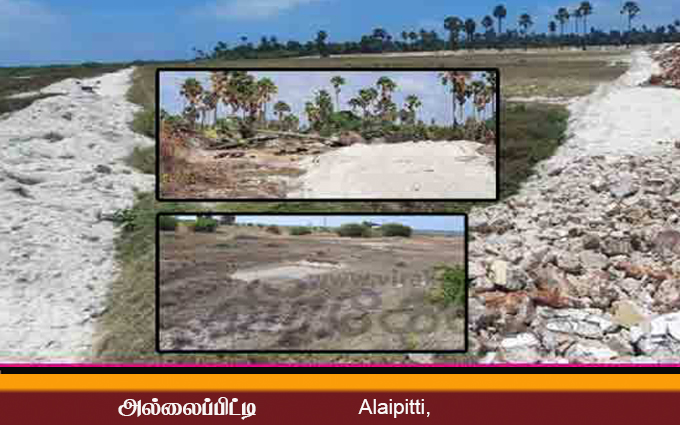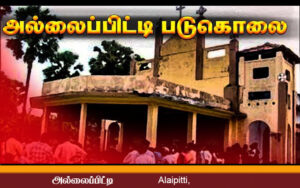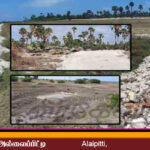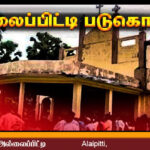

Tamil Eelam, lies the village of Alaipitti,

In the south-western area of Jaffna District, within Tamil Eelam, lies the village of Alaipitti, situated on the picturesque Velanathi Island. Alaipitdi earned its name as the place where ocean waves gently meet the sandy dunes. The name Allipity, attributed to the region’s vast presence of water lilies (Nymphaeaceae), is thought by some to have eventually morphed into Allaipiti. Allapitti, once a town distinguished by its vast sand pits, has witnessed a significant environmental degradation over time. The relentless excavation of sand has stripped it of its natural character, leaving behind a plain. Agriculture and fishing are the main economic activities in this area, where tobacco and chilies used to be the key cash crops, playing a major role in the region’s economic development.
 During the Dutch colonial occupation, this area served as a prominent trading port. The unearthing of ancient gold coins from Gujarat, akin to pearls in appearance, unmistakably indicates its historical role as a center for trade and international connections. A recent report by the ‘China Daily’ on September 29 highlighted the Shanghai Museum’s announcement of a remarkable archaeological discovery in Allaipiti, Jaffna, where 600 ancient Chinese pottery pieces were found by Chinese archaeologists.
During the Dutch colonial occupation, this area served as a prominent trading port. The unearthing of ancient gold coins from Gujarat, akin to pearls in appearance, unmistakably indicates its historical role as a center for trade and international connections. A recent report by the ‘China Daily’ on September 29 highlighted the Shanghai Museum’s announcement of a remarkable archaeological discovery in Allaipiti, Jaffna, where 600 ancient Chinese pottery pieces were found by Chinese archaeologists.
The area of Allaipitiya has long been celebrated for its exceptional Karpakadaru (palm tree) cultivation, a vital resource for the Eelam nation, and its skill in palm-work handicrafts, which still persists in places. The community also keeps its ancient artistic traditions alive, notably through unique performances such as Nattukoothu, Vadamodi, Thenmodi, Nondi Natakam, and Bhoothambi Natakam. Allaipiti has a rich legacy of nurturing poets, scholars, artists, academicians, workers, fighters, and heroes, all of whom have left an indelible mark on the motherland. This place has remained steadfast and resilient through various adversities. A series of brutal massacres occurred on May 13, 2006, in the Velanathi villages of Allaipity, Puliyangkutal, and Bangalavadi. Sinhalese marines brutally attacked the villagers, storming into houses and opening fire.
A particularly tragic episode occurred in one house in Allaipitiya, where nine individuals, comprising two children, were killed. Additionally, on August 13, 2006, the Allaipitiya St. Philip Neriyar Shrine was shelled by the Sri Lankan Army, causing at least 15 deaths and injuring 54 people. The true essence of Alapitti lies in the resilience and enduring spirit of its inhabitants, who, despite adversities, remain fiercely proud and dedicated to preserving their town’s renown and national spirit of Tamil Eelam with unwavering dedication. Vaddakkachchi, Vinod
ALLAIPITTAI ST.PETER CHURCH MASSACRE 13 AUGUST 2006.


